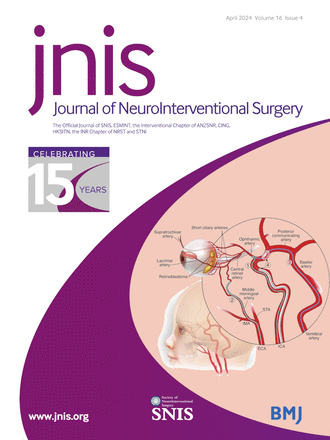The April 2024 cover of the Journal of Neurointervential Surgery celebrates the fifteenth anniversary of that publication, and included within the issue is another milestone. “Advancements in super-selective catheterization and drug selection for intra-arterial chemotherapy for retinoblastoma: a 15-year evolution” reviews the remarkable success of this interventional procedure, which is credited with a dramatic decrease in deaths from metastasis as well as an equally striking decrease in the number of eyes lost to the disease.
Co-authored by neurosurgical residents Gary Kocharian and Natasha Kharas, neurosurgeon Jared Knopman, and interventional neuroradiologist Y. Pierre Gobin, all of NewYork-Presbyterian Weill Cornell Medicine, and Memorial Sloan Kettering ophthalmologists Jasmine Francis and David Abramson, the paper covers three five-year periods of intra-arterial chemotherapy treatment for retinoblastoma, showing an increase from 80% success rate in the first five years to an 89% success rate in the third period. The study evaluated results at NewYork-Presbyterian Weill Cornell Medicine between 2006 and 2021.
Before 2006, the majority of children diagnosed with retinoblastoma, a rare cancerous tumor of the retina, underwent enucleation surgery. Removing the child’s eye was a drastic but lifesaving step, as there were no effective treatments for the cancer. In 2006, however, Dr. Y. Pierre Gobin of Weill Cornell Medicine and Dr. David Abramson of Memorial Sloan Kettering Cancer Center started an innovative new treatment that promised to save eyes as well as lives. Using a tiny catheter, a neurointerventional team could deliver a dose of chemotherapy directly to the tumor, killing off the cancer without removing the eye.
The new treatment made the news in 2007 when Utah Jazz basketball player Derek Fisher and his wife opted for the new treatment--at that point used only in 14 other patients--for their 10-month-old daughter. The child not only survived, but thrived, even regaining some of the vision she had already lost in her left eye. Since then, intra-arterial chemotherapy has become a standard of care in advanced medical centers. In centers that can provide the treatment, more than 90% of those treated have avoided enucleation surgery, death rates from tumor metastasis is less than 1%, and as many as a third of patients experience improvement in vision in the affected eye.
“This has been an extremely gratifying development,” says Dr. Gobin. “Preventing the loss of eyes in children, and allowing them to have a healthier and more typical childhood, has been a great gift. I feel honored to have taken part in developing this treatment and am very happy for the families who can now realistically hope for good outcomes for their children.”
See our Gallery of Covers for more of the groundbreaking articles that have been cover stories over the years
See more about intra-arterial chemotherapy for retinoblastoma


